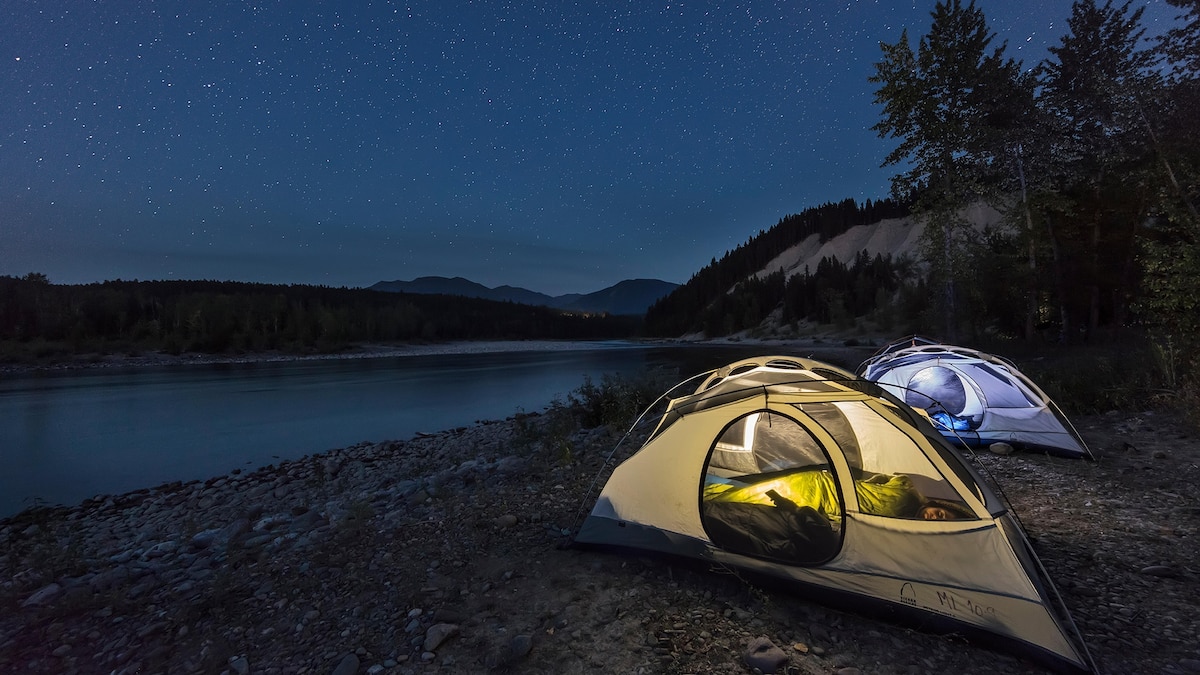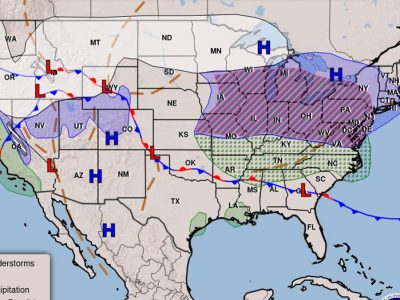Imagine standing in the heart of Montana’s vast wilderness, the air crisp, the silence profound, and above you, a galaxy of stars so bright it feels like you could reach up and touch them. Montana’s legendary Big Sky offers vast horizons where the stars shine with otherworldly clarity. With some of the darkest skies in North America, thanks to minimal light pollution and high-altitude vantage points, Montana’s night sky becomes a canvas of constellations, planets, and the Milky Way.
In 2025, celestial events make Montana a must-visit for stargazers and astronomy enthusiasts alike. From a total lunar eclipse to meteor showers and planetary alignments, this is a year to witness the universe in its full splendor against Montana’s rugged peaks or endless prairies.
Best times to see stars

Every season in Montana brings unique stargazing opportunities, including chances to see the aurora borealis. Photograph by Nika Belianina, Alamy Stock Photo
When it comes to stargazing in Big Sky country, there is no bad time of year — only choices to weigh, says Angela Tempo, a night sky photography guide for Yellowstone Wildlife Tours. “The colors of the Milky Way core are better in the summer, and the auroras have been great between May and September. But there are a lot of meteor showers in the winter, and the skies are crystal clear after a snowstorm.”
Other factors to consider include daylight hours and weather. “In the summer, you have to stay awake until at least midnight because of late sunsets,” says Tempo. Winter allows stargazers to start earlier but often has frigid nights, sometimes plunging to 40 degrees below zero Fahrenheit.
In summer or winter, Ryan Hannahoe, executive director of Montana Learning Center, suggests timing your visit around the new moon for optimal darkness. “The moon is nature’s light pollution. Its brightness can wash out the night sky and reduce visibility.” Stargazing is best about 90 minutes after sunset or before sunrise when the skies are darkest, he adds.
(Related: How to photograph the stars.)
Great spots for stargazing
“Everybody wants to go to Glacier and see the majestic mountains, lakes, maybe a grizzly bear. But the smaller out-of-the-way places are hidden gems,” says Mark Paulson, Director of Big Sky Astronomy Club and Board Co-Chair of the Montana Chapter International Dark Sky Association. “Try to explore the countryside in the state parks and smaller areas,” he says.
According to the Montana International Dark-Sky Association, there are top destinations for dark sky viewing all around the state: Kintla Lake, Howard Lake, and the Apgar Visitor Center inside Glacier National Park provide stunning views alongside majestic mountain backdrops.
Brush Lake State Park and Nelson Reservoir are known for their exceptionally low light pollution. Bannack State Park and Copper Creek in southwestern Montana present intimate settings ideal for avoiding crowds.
(Related: What are stars made of?)
The Lewis and Clark Interpretive Center and Judith Landing in central Montana offer a unique opportunity to pair stargazing with cultural exploration. Meanwhile, Medicine Rocks State Park in southeastern Montana, with its dramatic sandstone formations, is an excellent destination for photographers.
Practical tips for stargazers

Camping is a wonderful way to stargaze, as you’ll be able to best preserve night vision. Photograph by Roberto Lopez, VWPics/Redux

Montana’s dark sky allows for ideal stargazing, even from the road. Photograph by Roberto Lopez, VWPics/Redux
Montana nights are chilly, even in the summer, so pack warm layers. Warm drinks like hot chocolate in a thermos add a layer of coziness to the experience. And plan for complete darkness, as dark-sky locations are often far from urban areas. Bring a reliable flashlight and extra batteries.
A reclining chair helps with comfortable viewing, and Hannahoe also recommends a red flashlight to preserve night vision and a 14-inch planisphere to navigate the night sky. “There are great apps out there, but I suggest using those for the planning session, not at night,” he says. “Every time you look at a light, like your phone, you reset your night vision, and your eyes have to adapt again, which can take up to 15-20 minutes.”
(Related: A practical guide to stargazing.)
Tent camping is a great way to experience dark-sky areas like the locations along Montana’s Trail to the Stars in central and eastern Montana. Whether camping or out for just the night, remember that Montana is home to various wildlife, from bison to grizzlies. Stargazing with a friend or small group can help create more noise that can deter animals while enhancing the experience.
For adventurers seeking more guidance, the Montana Learning Center offers a Summer Stargazing Series, while the Big Sky Astronomy Club hosts Summer Star Parties in collaboration with Glacier National Park. These events vary but usually feature experts who give an astronomy overview and multiple telescopes pointed at night-sky objects such as star clusters, nebulae, the rings of Saturn, or other planets.
There are other options if you can’t make the dates of the star parties or don’t like the idea of crowds. Groups of up to 10 can rent a telescope at the Montana Learning Center for up to two hours. Or you could book a trip through the Yellowstone Wildlife Guide’s Night Sky Photography program any time during the year.
Celestial highlights of 2025

2025 brings numerous celestial highlights, from meteor showers to planetary alignment. Photograph by Alan Dyer, VWPics/Redux
The year starts with Venus dominating the sky in a special transit. “Venus travels really close to the sun from Earth’s vantage point on February 19. Only occasionally do you get to see it in the night sky like this,” says Hannahoe.
February 28 brings another planetary alignment, with seven planets visible. Mid-August features a stunning conjunction of Venus and Jupiter appearing remarkably close just before sunrise, while mid-September offers a rare treat of Saturn at opposition.
Spring’s meteor showers include the Lyrids (peaking April 22) and the Eta Aquariids (May 5-6). August delivers the Perseid meteor shower, while November sees the Taurid swarm, where fireballs might be visible, followed by the Leonid meteor shower under a crescent moon in mid-November. Rounding out the year is the Geminid meteor shower on December 14. Hannahoe says to look east about an hour before dawn for the best view of meteor showers.
The moon also takes center stage, starting with a blood moon lunar eclipse on March 13-14. On July 20, early risers can witness a slender crescent moon glowing just before sunrise, positioned beautifully near the Seven Sisters (the Pleiades star cluster). And a supermoon brightens the sky on November 5.
Finally, the sun’s peak in its 11-year cycle of high activity promises incredible opportunities for the northern lights throughout 2025. While these viewings depend on the sun’s activity and solar storms, the higher in latitude you go, the more often you’ll see the aurora and the more impressive it will be, says Hannahoe.
(Related: Nine must-see night sky events to see in 2025.)
A cosmic invitation
While 2025 is set up for excellent stargazing, Montana offers something transcendent any year: “On a clear night, just go outside and look up,” says Paulson. “Take some quiet time away from the hustle and bustle of daily life. It’s rewarding for both the mind and the soul.”
In Montana, the night sky offers a chance to connect with the cosmos and be humbled by the beauty above.
Tiffany Nieslanik is a freelance travel and culture writer drawn to stories that begin with the question, “Why?” She specializes in the intersection of personal transformation, place-based storytelling, and cultural connection. She can usually be found wandering historic streets with her family, petting stray animals, or getting lost in a local bookstore.










